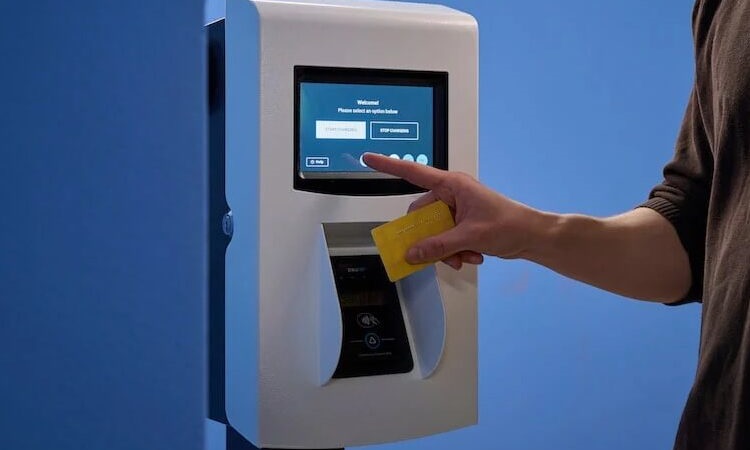As part of the virtual initiative “Who is Europe in 2024?” organized by CharIN, Kai Tullius, Policy Lead of the European Commission, Petar Georgiev, Head of Regulatory Affairs at AMPECO, and Jan Wegener, Team Leader Europe at NOW GmbH, provided an overview of what the future of charging infrastructure will look like.

In response to a question about sanctions for company violations, Tullius comments: “We could take action against certain operators if we believe there is a clear breach of regulations like the alternative fuels infrastructure regulation (AFIR).“
However, he notes that in legal texts of this nature, charging point operators (CPOs) have some “flexibility” for companies to introduce their solutions, and if they are not challenged, then there will also be no involvement from the Court of Justice.
“In this way, CPOs are able to provide consumer-friendly solutions while also being very easy for them to manage,” says the Policy Lead.
So, what are the requirements that charging point operators must meet?
In principle, the objectives and requirements for EV infrastructure focus on ensuring convenient and transparent access for end users.
CPOs must offer the option of ad hoc charging at public access points, using common payment methods in the European Union (EU).
Ad hoc charging means that an end user can purchase the service without the need to register, sign a formal agreement, or establish a business relationship beyond acquiring the service.
This allows for a simple and direct purchase of the service without the obligation to subscribe to a contract with a mobility service provider.
Secondly, charging prices must be reasonable, transparent, and non-discriminatory, facilitating comparison between providers and end customers.
It is also required that charging points be digitally connected and capable of smart charging to enhance efficiency.
Tullius explains: “What we want to achieve is that anyone arriving at a station can easily pay with the instruments they have access to, such as a mobile phone and a credit or debit card.”
“If that is ensured, great, if not ensured, it is illegal“, he adds.
It is worth noting that not all Member States are obligated to meet the targets set by AFIR.
Those reaching at least 15 per cent of light electric vehicles in their total fleet of registered vehicles may request lower requirements from the European Commission.
This measure applies in cases where the implementation of standard requirements is deemed detrimental to the country in question.
Finally, regarding the future review of the text, Tullius indicates: “My hope for 2026 is that the objectives of AFIR are understood and that the regulation is implemented. I hope we don’t have to regulate it even more,” he states.
Specifically, the scheduled review for that year targets Article Six where the greatest doubts lie, which deals with heavy-duty vehicles.
The aim is to produce more comprehensive reports and texts covering specific data from that particular sector.
Therefore, the European Commission is gearing up to publish a crucial report detailing the direction of the automotive market.
Under the guidance of the commissioner, this document will not be limited to technical analysis but will seek to understand firsthand how manufacturers and operators will meet CO2 emission performance targets for heavy-duty vehicles.
The text will explore the future landscape of the market, addressing critical questions such as the projection of expected vehicle numbers, the predominant technical profiles, and whether current targets are appropriate.
Additionally, it will question whether the standards set for electric and hydrogen vehicles are realistic or require adjustment.
This analysis focuses on understanding where the markets are heading and how regulatory policies can adapt to ensure sustainable and efficient development in the automotive sector.
What does the future hold for chargers?
The major challenge, according to the participants, lies in ensuring that all operators implement an easy, secure payment method, mainly through a mobile device.
However, they also shared their perspective about future and consistent technologies.

Petar Georgiev states: “The biggest trend is that we see a growing requirement to integrate payment terminals with what, in our case, is the Charge Point Management System (CPMS).”
What is a CPMS?
It is a comprehensive cloud-based software solution designed to monitor and control various aspects of charging stations remotely.
This platform facilitates monitoring of the charging device status, user access management, data collection for billing, program optimization, and identification and resolution of potential faults or issues.
Connecting chargers to a network triggers a series of advantages for both electric vehicle drivers and service or maintenance providers.
For drivers, connectivity provides clear information and greater control over charging sessions, while for service and maintenance providers, it facilitates performance optimization, remote software updates, and more efficient problem resolution.

On the other hand, from Jan Wegener’s perspective, Near-field communication (NFC) and dynamic QR codes are prevailing in current payment systems.
These tools allow authentication without a pin and are compatible with smartphones for a more convenient user experience.
Although he acknowledges uncertainty about future protocols and challenges, Wegener comments: “We expect to see a gradual shift towards automatic authentication and increased security in payments for the medium term.”
Similarly, all three speakers agree that the main concerns currently revolve around scams and, therefore, distrust in the implementation of QR codes for payment, due to a perception of vulnerability.








